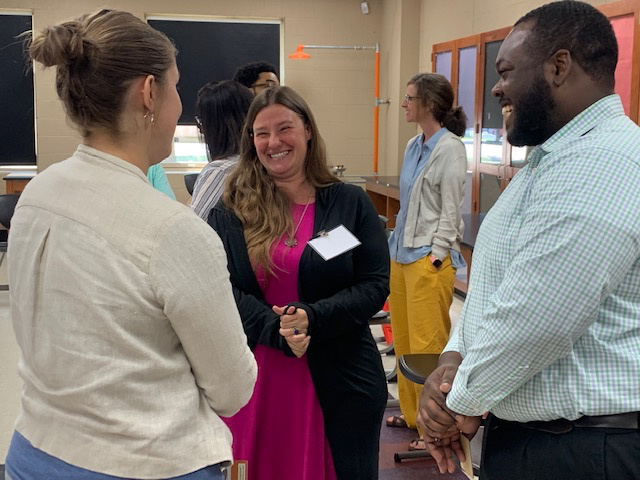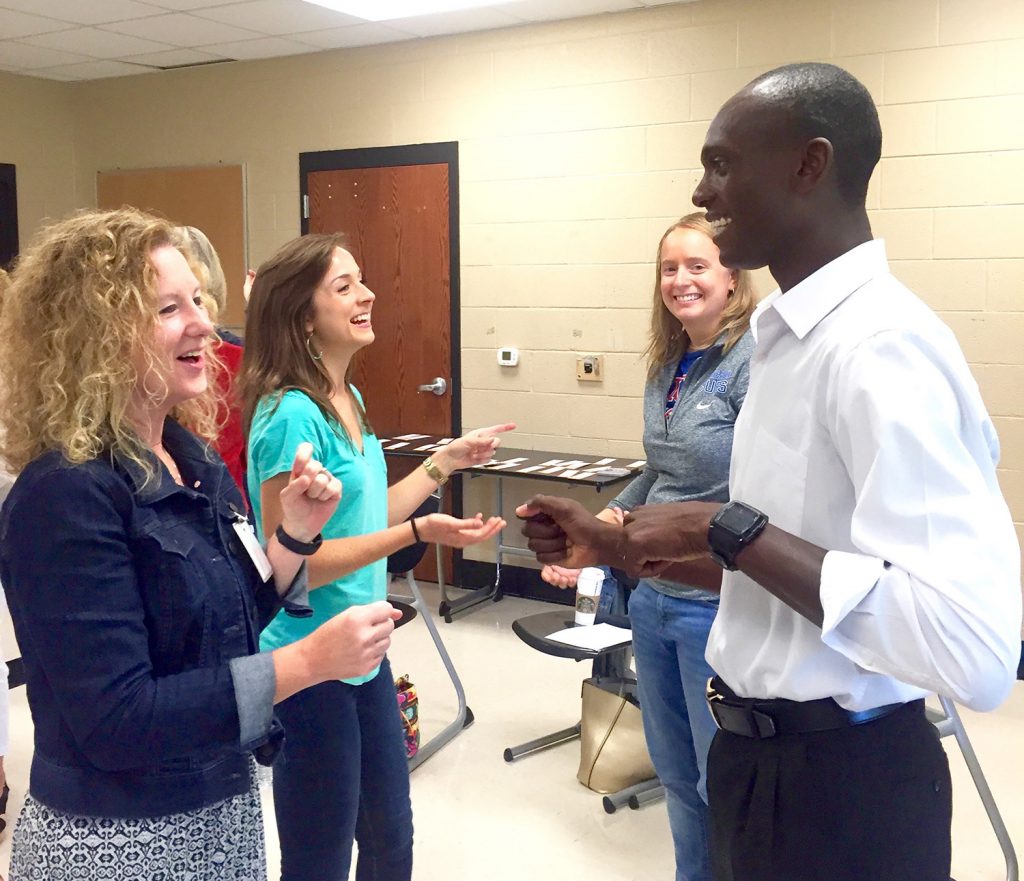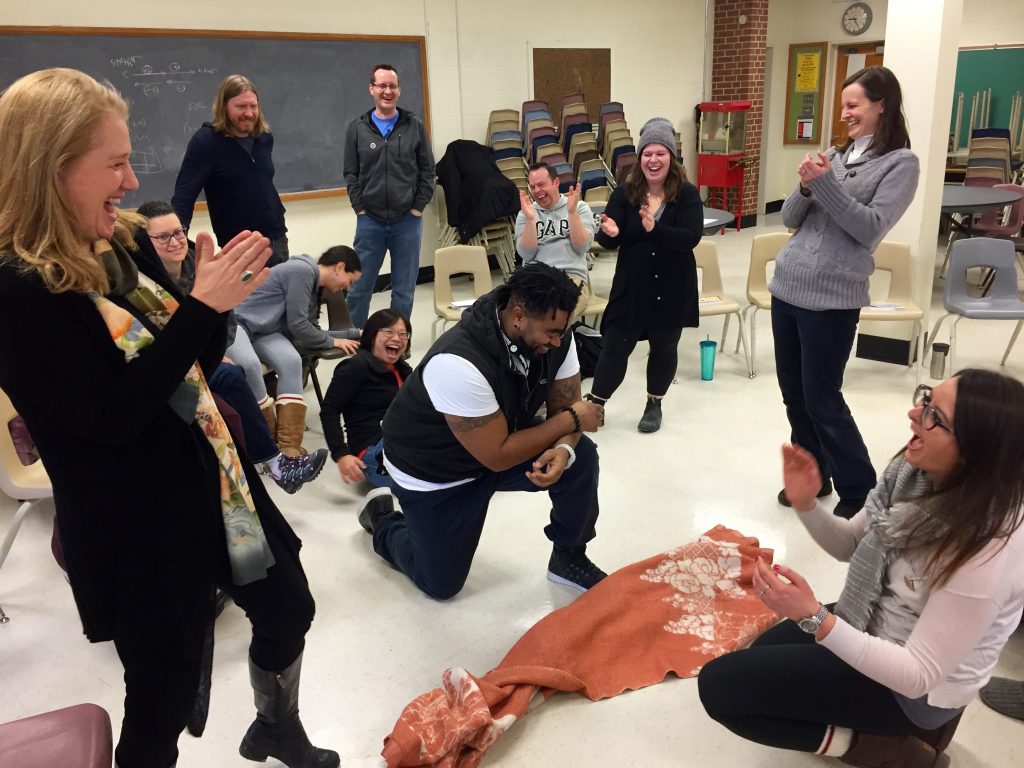Aug 22, 2019 Why Names are Important and How to Honor Them
This bestowal of name and identity is a kind of symbolic contract between society and the individual. The name differentiates the child from others; thus, society will be able to treat and deal with the child as someone with needs and feelings different from those of other people. Through the name, the individual becomes part of the history of the society, and, because of the name, his or her deeds will exist separate from the deeds of others. —H. Edward Deluzain, 1996
 A key ingredient for creating a positive and productive environment for learning is to help participants and teachers/leaders know and use each other’s names correctly from the very beginning of the school year or program. Dr. Angela M. Ward is a thought leader I admire in the education world who offers transformative resources for promoting equity in education. She emphasizes how important it is for teachers to make the effort to learn and correctly pronounce the names of their students because of the powerful role they play in the positive identity development of each student in their care. Even in the small schools I encounter in rural areas — where educators might assume students already know each others’ names — many actually don’t or are not always using and honoring names in a respectful way. I have found the same to be true with adults in the workplace.
A key ingredient for creating a positive and productive environment for learning is to help participants and teachers/leaders know and use each other’s names correctly from the very beginning of the school year or program. Dr. Angela M. Ward is a thought leader I admire in the education world who offers transformative resources for promoting equity in education. She emphasizes how important it is for teachers to make the effort to learn and correctly pronounce the names of their students because of the powerful role they play in the positive identity development of each student in their care. Even in the small schools I encounter in rural areas — where educators might assume students already know each others’ names — many actually don’t or are not always using and honoring names in a respectful way. I have found the same to be true with adults in the workplace.
Given names represent choice, thoughts, and feeling on the part of the individual’s family members. Preferred nicknames or new or shortened names chosen by the individual represent a personal sense of self, choice, control, and ownership. Honoring this sense of identity and choice promotes dignity, respect, and positive group culture.
Carefully curated and facilitated activities help groups of all ages practice names and explore the concepts of connecting with others, honoring their peer’s strengths and personalities, and showing respect for individualism, identity, and choice. The following are a few of my tried and true activities to help groups learn, practice, and reinforce names in a meaningful, but playful, non-threatening, and palatable way.
Thoughtfully Sequencing Name Activities
Warm the group up first! I try to avoid contrived name activities that put people “on the spot” too early or require them to feel under pressure to memorize — especially early on in group development. As mentioned in previous posts, I often begin with small group and partnering activities before moving to a whole group or whole circle activity or discussion in order to build comfort with group process, sharing, and dialogue. My previous posts such as “Start Off With Style” offer simple, non-threatening partner matching techniques using props, and simple reflective and get to know you questions that are useful for this important first step. Handshake Mingle is one I’ve shared many times over the years in this blog and in both of my books as a rapport building, active reflection and review strategy. I mention this effective, multi-purpose activity again here because it is one of the most impactful initial name and community building activities I have ever used and it is a helpful warm-up to activities such as Name Meanings. For a full descriptor see my December 2018 post, or the Inspired Educator, Inspired Learner book.
Name Meanings Activity
We can better remember a person’s name when we have meaningful information associated with it. When participants already know each other’s names, this activity can help them learn more about each other, and it can lead to discussion around the importance of honoring a person’s name (i.e., pronouncing it correctly, using it appropriately, showing respect for each other). This activity works best after a few warm-up techniques like the Handshake Mingle when the group is more comfortable and willing to share.
Facilitation Suggestions:
• Ask group members to line up silently by the number of letters in their name or preferred nickname.
• Next, have them form a circle and take turns sharing their name. Ask them to clarify the correct pronunciation and give them the opportunity to share “the story of their name.”
(i.e., origin, meaning, cultural history, if it is a family name, reasons for shortening or using a nickname). Emphasize that sharing a story isn’t necessary if they don’t have one to share, they can share something else if they choose, like their quote/button/tool from the previous warm-up, or just their name, whatever they are comfortable sharing.
• Most importantly, this is an opportunity for students to take ownership and share with the group the CORRECT pronunciation or nickname, something that often gets overlooked or mistaken in school settings.
Outcomes/Reflections:
Learners of all ages have shared they prefer this activity to other name games because they get to share information that is factual and they don’t have to think of contrived additional information (i.e., a favorite fruit that begins with the same letter as their name). It even works with large groups. People seem to want to listen and share this kind of personal information, even if it is going to take a while. I have used this activity with all age groups. It has been my experience that even very young children know about their name origin and/or feel strongly about what they want to be called.
Time and time again with both student and adult groups I have found that this activity has led to meaningful group norms conversations and often revelations that for months or years colleagues, teachers, or peers have been addressing a group member incorrectly and that person didn’t speak up until participating in this activity. While I was working with a school faculty, one participant who had been teaching at the school for 25 years stated during this activity that though all of her colleagues had been calling her “Patty” for two decades, no one else in her life calls her “Patty”, and she prefers “Patricia.” It turned out that a secretary arbitrarily shortened her name when setting up email addresses many years ago, and it stuck. She hadn’t felt comfortable correcting her peers for all of those years until given the opportunity in this activity!
This is a powerful activity that when thoughtfully facilitated, can lead to meaningful discussion and reflection around names and identity, culture, and history. This has been my experience in working with Native American groups, teachers at a local school for the deaf and hard of hearing, and youth in foster care where compelling discussions arose on honoring names, the place of names in personal identity and American culture, reclaiming names, and more.
My most compelling experience with this activity was hearing a teacher say after participating in one of these discussions, “For years when I’ve had students with the same name in my class, I have assigned them nicknames like Michael, Mike, Mike A. without asking their preference. I will never do that again.” As Angela Ward in her recent post on AntiRacist Teaching states, “Teachers who are AntiRacist honor the dignity in the given name of each student in their care because they lead their classroom with love.”
References: I learned this activity from a group of teachers in Laconia, NH. It is also in my book, Tips & Tools for the Art of Experiential Group Facilitation.

Two playful activities to practice names:
Name Roulette
Material: a spot marker to designate the “turn around” point
I learned this active, playful group memory game from my colleague Karl Rohnke many years ago. I like that it can be a method to encourage participants to study up on each other’s names, and gives them an excuse to ask and clarify about their names when you give them few minutes at the start of the game to check in with each other and review names together—friendly competition can be a great motivator! I also have found that when this follows the “Name Meanings” activity, participants will work hard to practice and remind each other about correct pronunciations of names.
Facilitation Suggestions
• Divide participants into two groups and have them form
side-by-side circles.
• Place an object between the two circles that acts as a marker.
• Have both circles of participants shuffle left or right while facing the center of their circles—no looking over shoulders.
• When you say “Stop,” the two participants who are at the marker turn around and name the person they are facing.
• Whoever names the other person first captures that person onto their team, and the captive must join that circle.
Peek-a-Who Names Review
Material: a blanket, sheet or tarp
Originally, I used this activity with elementary students, but I’m finding that adults and adolescents also enjoy the playful, hiding aspect of the game. Brain research shows that people of all ages like to hide, play, guess, and predict. As with Name Roulette, when presented with the challenge, participants will study up on each other’s names and remind each other about correct pronunciations. As with Name Roulette, give team members a few minutes at the start to review each other’s names together (even for those groups you think know each other.
Facilitation Suggestions
• Divide the group into two teams using the Which One? activity (see previous post or page 65 of Inspired Educator.
• Have two facilitators or group members hold up a large blanket or tarp vertically.
• Ask teams to stand on opposite sides of the blanket, hidden from the view team.
• Each team then chooses one person to move up close to the blanket (for young students, taking turns can be the most important aspect of the game).
• On the count of three, the blanket drops and the two participants race to name each other.
• The winner captures the other person onto their team.
Appreciations Version of “Peek-a-Who”: In my June 2018 “Showing Appreciation and Celebrating Success” post, and in the Inspired Educator, Inspired Learner book, I share an appreciations version of this activity for building positive group norms, practicing positive descriptive language, reflection, and celebrating group members’ strengths. This works best after a group has spent time together, so is appropriate for existing work groups or later on in a school year.

Taking the time up front to build community through learning and practicing names pays off in many ways later. Many adult participants have told me that, because of the Handshake Mingle activity, they finally learned the name of that person who they had been passing in the hallway for years. And, even months after the in-service day, they often greet each other with the handshake when passing. One high school student stated in a journal entry after experiencing these activities in our class, “I am getting to know people better, and I can actually say ‘Hi’ to them in the hallway when before I didn’t have a clue who they were. And there is meaning behind the hello instead of a hello that means absolutely nothing.”
References:
For Angela Ward’s resources on equity, culturally responsive teaching, and inclusion visit: http://2wardequity.com/antiracisted/
For H. Edward Deluzian article “Behind the Name” visit: https://www.behindthename.com/articles/3
For complete descriptors of these strategies and more community-building activities see Inspired Educator, Inspired Learner and Tips & Tools for the Art of Experiential Group Facilitation



No Comments